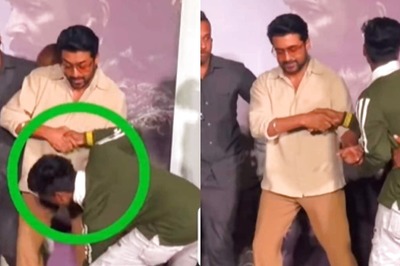
views
For four decades, the Chinese juggernaut has been marching forward. China has enjoyed a peace dividend in this period, and its rise has been — by and large — peaceful. By the end of the last decade, the world, including the US, the P5 nations and India, had more or less reconciled to a future dominated by the G2 — the US and China. From a Chinese standpoint, the US was the only competitor and equal. But then, things started changing dramatically, as they often do.
First came the pandemic, delivering a body blow to the image that China had been so assiduously building for decades — a responsible power with a plan for achieving global success — if not dominance. Starting from the potential origin of the virus as a Chinese bio-weapon gone wrong, to the super sluggish recovery of its economy, post-pandemic, it’s been a PR nightmare. The suspected efficacy of its vaccine, to its inability to control the pandemic within its borders — despite draconian measures — raised uncomfortable questions about the quality of Chinese products and the Chinese model of governance itself. The world woke up to the dangers of a single point of failure in the global supply chains. China’s export-driven economic miracle, where China was the factory of the world, is suddenly under global scrutiny, if not downright attack.
To be a great power, besides economic heft, China also needs to demonstrate dominance over geography beyond its borders, as well as over global institutions. Hence, dominance in Asia is a basic qualifying criterion. However, its attempt to drive home the message to India, in Galwan, went horribly wrong. Beijing had not factored in India’s resolute response, both militarily and economically. Indian public opinion now clearly treats China as its enemy number one — a burden that Pakistan had largely carried since India’s independence. Blood having been shed on the Sino-Indian border, new SOPs are in place. China knows that the local Indian Army commanders no longer have to wait for New Delhi’s nod before opening fire. China now has to match its rhetoric with actual gunfire and that situation can unfold very soon. Its well-honed strategy of browbeating opponents through chest thumping only has outlived its utility.
India on its part seems to be on a mission, of its own, to show the mirror to China. Besides maintaining a strong military posture along its border, it has overtly embraced the anti-China QUAD grouping. Unlike in the past, India clearly wants to take the battle into the South China Sea and limit China’s degree of freedom in the Indian Ocean. It has started selling advanced weaponry to China’s adversaries like Vietnam and the Philippines. From a largely defensive posture, throughout its history, India has now clearly taken an offensive-defensive stance in its dealings with China. Additionally, India’s economic countermeasures against China have created a template for other adversaries to emulate.
The post-World War II world order was shaped by America. There is no global institution worth its salt, that is not dominated by the US. However, China has been using its increasing economic muscle to quietly exert greater influence over some institutions like the World Health Organisation (WHO), over the years. On its part, it has created non-American groupings and institutions like SCO, BRICS, RIC, AIIB, etc. It has embarked on its flagship Belt and Road projects across the world. But to China’s chagrin, India has now emerged as its most formidable detractor in all these forums. Not just these groupings, in most multilateral forums, including the UN Security Council, G20, NSG, etc., China and India appear to be at loggerheads.
The debt trap, inherent in China’s Belt and Road initiatives, is becoming clearer by the day. The timing of it couldn’t have been worse. With the West tightening the screws on economic and technology relationship with China, the light at the end of the tunnel of economic woes is not visible. China, which is experiencing an economic slowdown itself, has limited options for financial engineering. Taking over assets like the Hambantota port — in Sri Lanka — is a recipe for bad press, in an environment of dwindling equity. India’s overt and covert opposition to projects like the CPEC in Pakistan and Pokhara airport in Nepal, are almost rendering them unviable. And who did Sri Lanka turn to when its debt-ridden economy was on the verge of collapse? India.
China’s bête noire — India — seems to have stolen a march over it as the voice of the Global South too. India’s vaccine diplomacy, where it distributed —for free — made-in-India vaccines to many poor countries of the world, has turned the tide in its favour. Whichever way China looks, India is now in its face. It is far from being only doom and gloom for China and it, by and large, manages to frustrate India’s efforts across most forums of disagreement, for example, in the 1267 Sanctions Committee of the UN etc. But therein lies the rub. A claimant to G2 power status has now been relegated to fighting a battle of narrative, across multiple platforms, with the largest democracy in the world. That’s a positioning nightmare.
China’s serious miscalculations has landed it in this imbroglio. India’s own rise, coupled with US’ response to its global domination, will continue to queer the pitch for China. How the story unfolds would make for an interesting read in the days to come.
The writer has over 19 years of IT services and investment banking experience. Views expressed in the above piece are personal and solely that of the author. They do not necessarily reflect News18’s views.



















Comments
0 comment